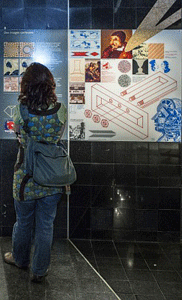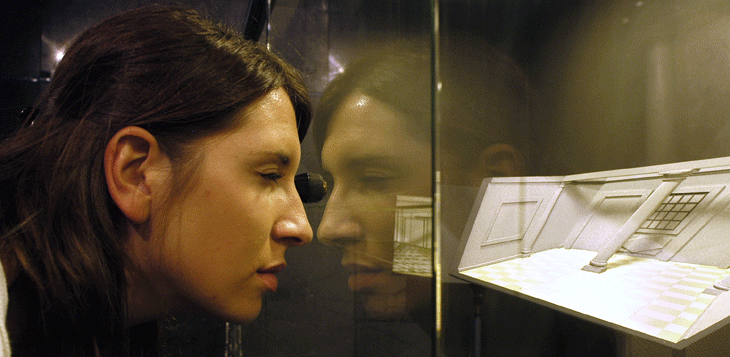A pinhole, a "tiny eye", is a small hole pierced in a screen which requires the viewer to observe a scene from a fixed point of view. The various pinholes in this stunning exhibition allow visitors to discover different ways of representing space and to experiment with trompe l'oeil, distortions and optical illusions.
1. Two unique rooms for playing with optical illusions
The exhibition "Pinhole, representation of space" by the artist Philippe Comar has a fresh look at perspective, playing visual tricks on visitors in two rooms of original architecture: the double perspective room and the room in fragments.
- The first room, divided in two, allows you to experiment with perspectives speeded up or slowed down, and to observe that from a certain point of view, the perspectives meet in the middle, giving our brain the illusion of a single room that contains dwarfs and giants
- The second room is designed for playing with the illusion of perspective based on disjointed architectural features or fragments of the room, dispersed in space, which are precisely recomposed, offering a coherent image through a spyhole.

Around these two rooms, models, frescoes and objects consider the representation of space and sum up how so-called "central" perspective has become part of our visual expectations during five centuries of painting then photography.
These features of the exhibition show how there are various other ways to represent space, depending on cultures and eras, particularly large-scale perspectives: plans, elevations, cross-sections, oblique or orthogonal axonometrics, inverse central perspective, cylindrical, spherical, anamorphic and distortion.


